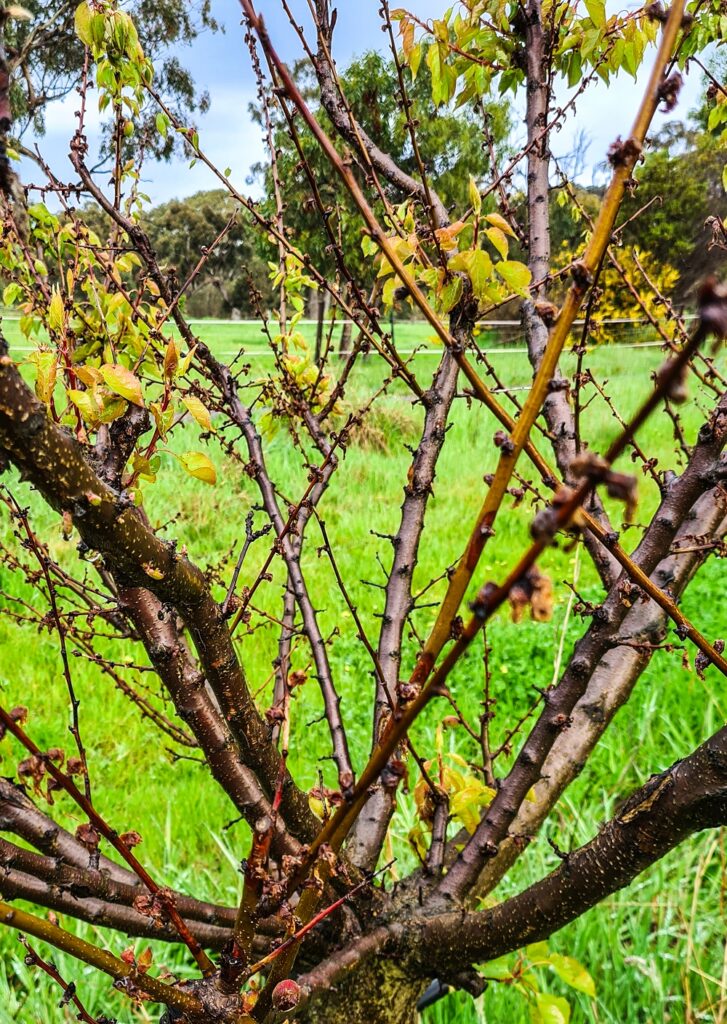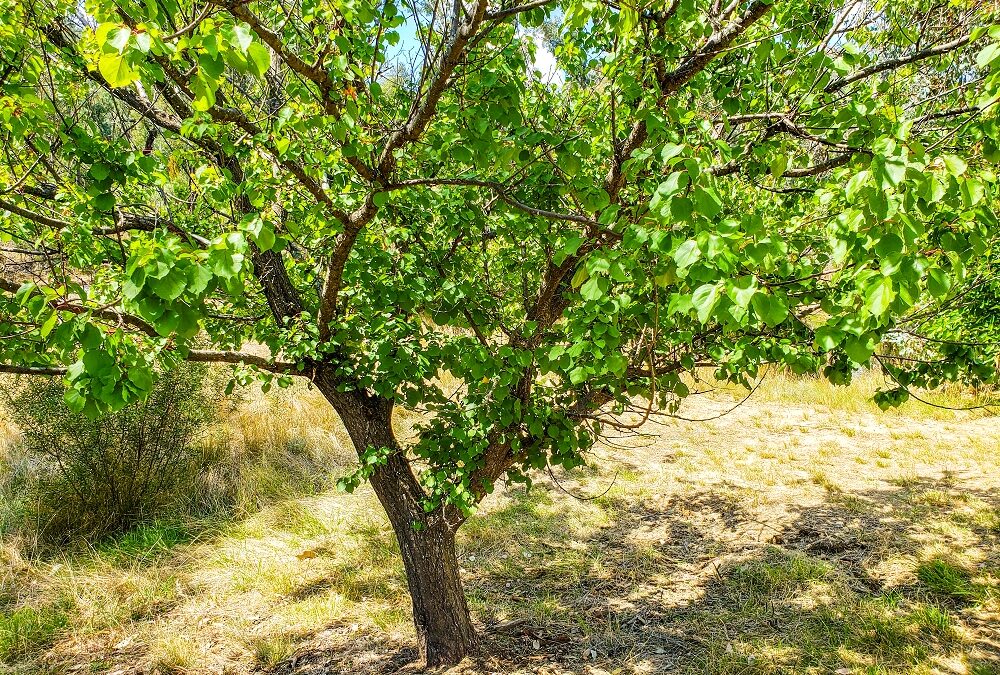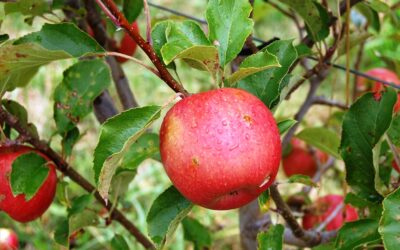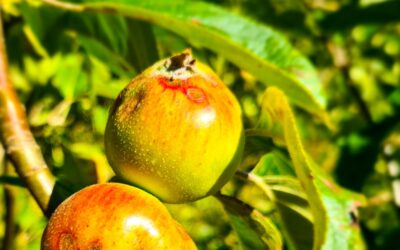Estimated reading time: 7 minutes
Do you have an apricot tree with no apricots on it? We can speak on this topic with a great deal of authority because it’s happened to us so many times!
It’s a sad but common result, particularly after a wet spring. It’s probably not much consolation, but if it’s happened to your tree, you’re definitely not alone.
Apricots are one of the most delicious fruits to grow in your backyard if you manage all the potential issues. But they’re also notoriously hard to grow.
The four main reasons your apricot tree has no fruit
Apricots are vulnerable to fungal disease, particularly in wet weather. So it’s no surprise that the main reason your tree has no fruit is likely to be disease.
The climate where our farm is situated doesn’t really suit apricot growing because we often have rain in spring. As a result, we’ve experienced a lack of fruit on our trees many times over the years.
They are also one of the earliest fruit trees to flower in spring. This makes them vulnerable to poor weather. Frost is the first one that comes to mind, but poor weather can also affect whether they have fruit in other ways.
The last reason is – thankfully – something you can control!

Reason 1: Blossom blight
This horrible disease accounts for most cases where your tree has no fruit. It causes the flowers to rot on the tree. Even worse, the disease then gets worse and causes dieback of the laterals. It can even cause branches to die. It can make your apricot tree look really sick. Luckily, most trees recover well. By mid-summer they usually look lush and healthy again.
What you can do about it
It is preventable with the right spraying of organic fungicide. However, extreme weather (like daily rain) might stop your sprays from working. If you got dieback of laterals in your tree, it’s really important to prune out all the dead wood before the next spring. This is one of the basic hygiene practices in your garden that will help to keep your trees healthy. Dead infected wood in the tree is full of fungal spores. Left in the tree, they’ll just start the whole cycle again next spring.
Reason 2: Frost
Any fruit tree can lose its fruit if it experiences a heavy frost while it’s flowering. Flowers are very tender and easily frost burnt. The problem with apricots (and almonds) is that they flower very early when the risk of frost is still high.
What you can do about it
Good planning is the first step. Apricots should be planted in the most frost-free site on your block. If they’re planted in a site that does get heavy frost then you’ll need to cover them with frost protection. That means you need to be alert to frost warnings through the whole flowering period, especially when the trees are at full bloom.
Reason 3: Lack of bee activity
If it’s too cold, or raining all the time when the trees are flowering, then there’s a good chance the bees won’t be out working. They’ll be in their hives staying warm and dry, like sensible bees.
What you can do about it
If you normally have good pollination and fruit set then you can feel confident that you usually have enough bees around. Unfortunately, there’s nothing you can do to make them work in bad weather. However, if your trees tend to have no fruit even when the weather at flowering time is warm and sunny, then you may have a lack of bees. The rule of thumb is that you should be able to count at least 6 bees in the tree when it’s in full bloom. If you don’t have enough bees you should plant more bee-attracting plants in your garden, or maybe get a beehive.
Reason 4: Lack of pollination
This is one you can completely control. Most (but not all) apricot trees need a friend to help them have fruit. That means they need the right pollinising partner that they can exchange pollen with.
Even apricots that are self-fertile will usually do better with a buddy that flowers at the same time, as long as their pollen is compatible. (See the chart below to find the right polliniser for your tree.)
If you decide that pollination is the issue and don’t have space for another apricot tree, you can always graft a polliniser onto your existing tree.

Apricot pollination chart
| Variety | Pollinisers |
| Bebeco | Any apricot that flowers at the same time, e.g. Moorpark, Patterson, Trevatt, Tilton |
| Bulida | Self-fertile |
| Caselin | Self-fertile |
| Castlebrite | Self-fertile |
| Castleton | Self-fertile |
| Divinity | Bulida, Moorpark, Rival |
| Earlicott | Any apricot that flowers at the same time, e.g. Katy and maybe Castlebrite. |
| Earliril | Blenril, Morocco, Sun Glo, Divinity. Self-infertile. |
| Glengarry | Self-fertile |
| Goldbar | Perfection, Goldrich |
| Goldcot | Self-fertile |
| Goldrich | Blenril, Earliril, Riland, Rival, Tilton |
| Harogem | Self-fertile |
| Hunter | Self-fertile |
| Improved Flaming Gold | Self-fertile |
| Katy | Self-fertile |
| Mariem | Self-fertile |
| Moorpark | Self-fertile |
| Morocco | Self-fertile |
| Mystery | Self-fertile |
| Piet Cillie | Self-fertile |
| Rival | Earliril, Goldrich, Perfection, Sun Glo, Tilton. Maybe Divinity, Trevatt, Skaha |
| Royal Rosa | Self-fertile |
| Skaha | Pollination required, self-infertile. Self-infertile, needs pollination from any other apricot that flowers at the same time (mid-season). |
| Sortilege | Partially self-fertile, best to plant with another apricot that flowers at the same time (late season). |
| Spring Giant | Improved Flaming Gold |
| Steven’s Favourite | Any apricot that flowers at the same time, Hunter. |
| Story | Self-fertile |
| Sundrop | Trevatt, partially Moorpark if bloom overlaps |
| Sunglo | Any apricot that flowers at the same time (mid to late season) |
| Tardif de Bordaneil | Self-fertile |
| Tilton | Self-fertile |
| Tomcot | Partially self-fertile, best to plant with another apricot that flowers at the same time (early to mid-season). |
| Trevatt | Self-fertile |
| Tri-Gems | Self-fertile |
| Watkins | Self-fertile |
| Westley | Self-fertile |
Why do apricot trees get so big?
Apricots often grow into beautiful, lush, big, vigorous trees (like the one at the top of this blog). That’s partly because they’re naturally vigorous, and partly because they often don’t have a crop.
Fruit trees can put their energy into two things – growing wood, or growing fruit. A healthy, balanced tree that has been well pruned and maintained will grow both.
The ideal situation for your fruit tree is that it will have a good crop of fruit every year. It should also grow some new wood each summer, especially trees like peaches and nectarines that grow their fruit on one-year-old wood.
Because apricot trees regularly don’t have fruit, they can put all their energy into growing wood. As a result, they can end up being huge trees.
Huge, beautiful trees with no fruit!
Related Articles
Noticed any brown rot in your stone fruit?
Brown rot in your fruit can be devastating, but it is preventable with the right knowledge, understanding, and equipment.
How to grow apples — the organic way
Apples are one of the most popular fruits to grow in your backyard. Learn the basics of how to look after your apple tree.
How to avoid depressing mistakes with your fruit trees
Creating an Action Plan for your fruit trees can help you avoid depressing mistakes, and feel more relaxed about your garden.








Hi Katie and Hugh. I live in the Blue Mountains NSW and have a Moorpark Apricot tree. I was so excited to see fruit this year after such a wet spring. One day I noticed a White Cockatoo picking off my fruit up the trunk. Another day there were none!
Sigh! Felicity that sounds so frustrating. Cockatoos can be a real menace. Have you ever netted your trees? Feel free to browse some of our blogs on netting – lots of ideas for keeping big pests off your trees. Sorry you won’t have apricots this year. Meg – GGF team.
Hi Kate and Hugh
Although this is not about fruit ( we do have an espaliered orchard) we have made our vegie garden entirely out of raised ( cheap, homemade ) wicking beds and have a very simple self watering system so we don’t ever have to hand water. The only constraint is the ground needs to be level. We are on tank water and so of course saving water is a premium consideration for us.
Sounds great Judy! What did you make your wicking beds out of out of interest? Meg – GGF team.
Spring/summer ’24, I’m having a bumper crop of apricots on my 40 year + tree here in Bendigo, more to the benign conditions at flowering time than to my management, I suspect though I have been gently pruning it over the past 5 years I’ve owned it. It’s a big tree so I can only net half of it which means the wattle birds and rainbow lorrikeets get the top half and whatever I can’t net in time. No idea what variety but the fruit ripens quickly in warm weather, has a bit of that skin discoloration but that seems to be its only problem. Stewed, the fruit tastes great.
Hi ANdrew, yes it has been a good season for apricots. Variety doesn’t really maytter as long as the fruit tastes good!